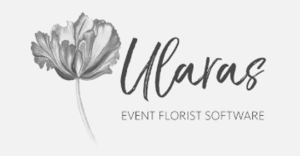client management systems: a farmer-florist perspective
Hello! And welcome to the newest installment of business chatter with Linda! If you’re not at all interested in the business side of floral design work, then stop here and save yourself from the stuff below. But if you are a little curious about managing client files and helping people though a business “pipeline”, please read on.
Conventional florists sometimes purchase client management systems to organize event work and even save time on ordering flowers. Some of these systems are linked directly to the companies that they buy flowers from. I was curious to see if the systems could streamline our event work, too. I also wanted to find out if their proposal templates held a candle to my one (I’m pretty particular). I also sampled some more generic client management systems that are designed to support creative businesses generally through client management.
Would I recommend testing some of those client management systems- ABSOLUTELY. One of the things that I’ve struggled with is pricing for our products. Because we are both a farm business and a florist business that uses the flowers from the farm business, it is really important that we insure we aren’t shorting one side of our business by underselling/buying products on the other side. In simplest terms- I need to make sure that I am at least “buying” the flowers from the farm at wholesale prices.
When I returned from a workshop out west in Washington state. I thought I was all set with pricing. What I realized quickly in my second season, when the wedding work picked up substantially, was that the “farm” pricing from rural Washington was too low for the frosty Northeast, where it is harder to come by flowers and we’re privy to a busy destination wedding market. Even the wedding planners I worked with were pointing out my under-pricing. Yikes. One significant difference is that most of our customers are looking for design work (and high end design work at that), rather than smaller pick-up or DIY orders.
I tried out some florist-based CMS programs this winter. Both Ularas and Details helped me break down the costs of my flowers and build them back up into designs to see the true cost of my work. This will all sound elementary to a conventional florist who buys flowers and greens in by the stem or bunch. But it was a useful exercise for me. The toughest piece about my trials was entering our own flowers into the platform. The “default” flowers are what you’d expect, and I found that the accompanying photos were - well - less than Instagram-worthy.
In order to make progress with these web-based florist event programs you’ll need to be able to see the going rate for wholesale flowers in your area. I’m a customer at our regional flower distributor so that I can buy in supplies and flowers if we ever get in a bind. My competitors in this area are mostly using this distributor, so the price list is really valuable to me in terms of determining my own wholesale pricing - both for design work in our own studio and for selling our goods to local florists.
If you are not in an area served by a wholesale distributor conventional florists near you are likely ordering in flowers from one or more of the national distributors, like Florabundance or Mayesh. I encourage you to open a buyer’s account with those companies, so that you can see their pricing. These distributors occasionally have some of the more unusual or higher end cut flowers and greens and might be the right place to look if you need a price for a specific variety - like when you’re wondering what to charge for your ‘La Belle Epoque’ tulips!
So here are some of my general reflections on the platforms I tested.
Ularas:
Pros: The trial was easy to start and required no extra sales pitch or sharing of a credit card number. I could set the whole thing up myself on their website, and when the trial ended my account just became paused pending payment.
Cons: This program is less “visual” than I prefer in a system. I like to see everything organized in a more visual, less listed out kind of way. That’s just how I think and how I like to share information with my clients. You also have to enter in all your specialty cut flowers because they are not part of the standard library of products.
Details:
Pros: This system did seem to accommodate my “need for visuals” better. It also helps you prepare some lovely proposals. Details offered very accommodating customer service (at least during the trial period) with a clear and communicative representative who sets up a call to walk you through the system online and answer questions.
Cons: Unfortunately there are not many options in terms of proposal templates. In a busy wedding market, I suspect clients who are collecting bids might see similarities between the proposals offered by florists using this system - any system, really I guess. My Details rep. also mentioned during my trial training that they charge their own payment processing fee. And—Warning: the Details software does not automatically “pause” at the end of the trial period. You have to enter a credit card number to start the trial and if you fail to cancel it…you’ll be paying the fee and it is kind of steep. When I inquired about whether or not there are other farmer-florists using this product, I learned that there are 2. In the whole country. I wonder who they are and how they feel about it?
Honeybook:
Pros: The trial was very easy to start- like right away. It has a clean interface that is centered on the progress of jobs through a somewhat editable “pipeline.”
Cons: That pipeline isn’t quite right for what I need it to do. I think this is part of my personality that wants/needs everything to be just so. I feel like I need to be able to re-name all of the stages in the pipeline to make them really suit our needs and un-complicate things. Honeybook also does not allow for the uploading of visual proposals that would be added to the client portals. I find this to be one of the most frustrating issues with some booking and client management systems. They say they can do everything for you in one place, but their “proposals” are more like invoices. Some people love Honeybook, and if you are lacking your own system that works — maybe it is something to try.
17hats:
I’ve had a subscription to 17hats for a while based on several recommendations from other wedding vendors. The ready problem for florists is the proposal issue. I find that when I start working like a conventional florist in terms of pricing, I’m re-writing every order item every time. The system has a unique feature where you can allow clients to select the number of items they’d like from an estimate— for example — how many bridesmaid bouquets, etc. But I find that our work is very custom - there are custom-designed pieces on almost every order, so I feel like I’m getting bogged down with things when I’m writing estimates. Additionally, the 17hats invoicing system will not allow me to charge a percentage of an order as a fee for delivery and installation. I charge different rates depending on the distance we have to travel to an event, the accessibility of the event (is it on an island reachable only by small boat? - yea that is going to take way more time and labor to reach), and the size of the event. I love that my current manual spreadsheet system figures all that stuff out for me.
Additionally, I’m sad to share that I’ve had to discontinue using 17hats on my website for lead collection. My lead form was hacked by a Chinese robot and I received THOUSANDS of fake inquiries starting around 3 am one night last week. I removed the form from my website, but the leads kept coming. I deleted the form in 17hats, but the leads kept coming! Eventually I had to block every incoming email with the @qq.com tail to stop the barrage of leads. Ack! Becuase 17hats has only daytime support, I had to wait for them to go live again to answer my pleas for help. They have made some changes to their system as a result, but I am not going to feel comfortable using their product again until they add a Captcha option to lead collection forms. So I’m back to using my Squarespace (website provider) inquiry form and monitoring the spreadsheet and the email account that it reports to. Which is really quite OK. I’ll miss the texts I used to get when a wedding inquiry came in through 17hats, though.
While I was trying out these platforms I was constantly comparing them to my own system. Would any of these purchased products work better than what I already have? I’m not sold yet. My current system combines several pieces. I prepare the proposal document in Canva for business, where I pay a small fee to control and simplify all of our branding. I upload custom sketches and flower photos. I link the client’s order from a live spreadsheet that is separately managed. I add a payment link for the deposit and a second one for the final bill if we win the job. All in, this process used to take me up to 9! hours, depending on the job and the number of extra things I had to track down. That is a full day spent on a job that may or may not be won. I think that is why I went looking for a different solution this winter.
Now, I’m working to build out some seasonal templates by flower color in Canva. I have already cut the time spent on prospective jobs down— way down on my own by following some sound business advice and consolidating steps where I could.
My invoice spreadsheet does much of the work the Ularas and Details software programs offer in terms of calculations per arrangement. My spreadsheet is set up to calculate how many of each flower and green we’ll want to harvest for the whole event and per item ordered. That helps us focus on harvesting what we need. The spreadsheet also allows me to determine the retail markup on our flowers and on supplies. It helps me calculate total labor hours needed for building all the various different kinds of items ordered. That labor piece is vital because it helps me estimate the number of assistants and freelancers I need to bring in to help us pull off each event. There are only so many hours in a day, and when you start taking big orders you have to figure out how to build your support team.
But perhaps the most important part of my spreadsheet system is the overall cost-profit analysis. The spreadsheet shows me exactly how much I can expect to spend on flowers and greens (be them from my own farm or elsewhere if needed), how much my supplies will cost per job, and how much money I must allocate for labor as an expense - my own labor and anyone I hire to help me. I appreciate the “all-in-one-place” nature of my spreadsheet, even though I’m really not a “numbers” person. I can see all the information on a single page, with minimal scrolling. It’s a document I hope to be able to share soon once I have edited it a bit more to make sure it can work easily for anyone who wants to use something similar.
How do I have time to build wedding proposals with extra bells and whistles at all? Well- the bulk of this work is done in the winter season. My daily tasks are no less important then, even though we aren’t farming in the same as the summertime. When people ask, “what do you do all winter?” - the answer is that proposal writing and client communication is a very big part of my day. Most of our clients are booking their wedding jobs 1 to 2 years in advance of their events. Things do get hairy in the summer when we receive inquiries for future events, and it is hard to find time to pull all the pieces together. I think that is probably true for every busy designer. For now, I’ll keep fine-tuning and innovating my process until I have something that works the way I want it to!
I know that is a pretty wordy post, but I thought it would be worth sharing. Please. Please! share comments, questions, ideas if you have them below. Let’s keep thinking on this one. Do you use one of the systems above and love or dislike it? Or do you use something else? What works for your business? Thanks for tuning in.





